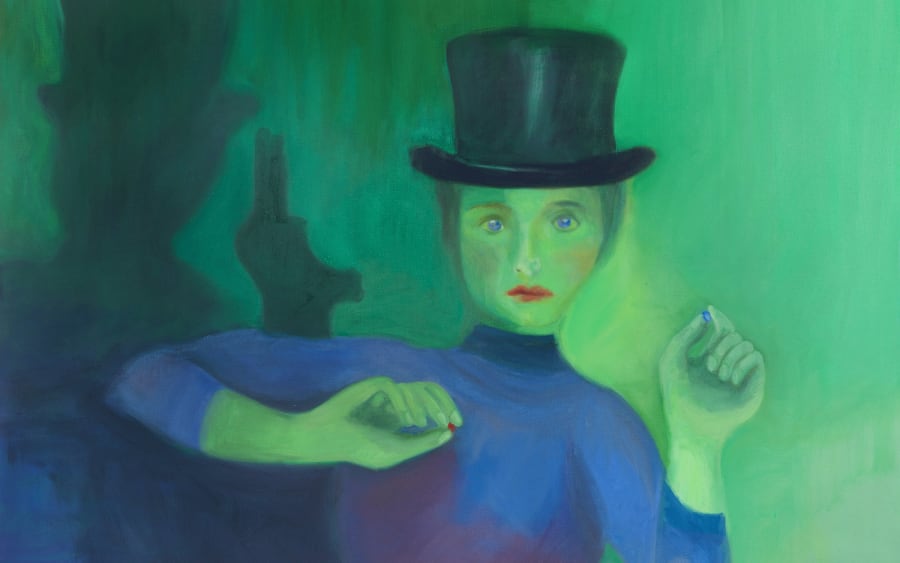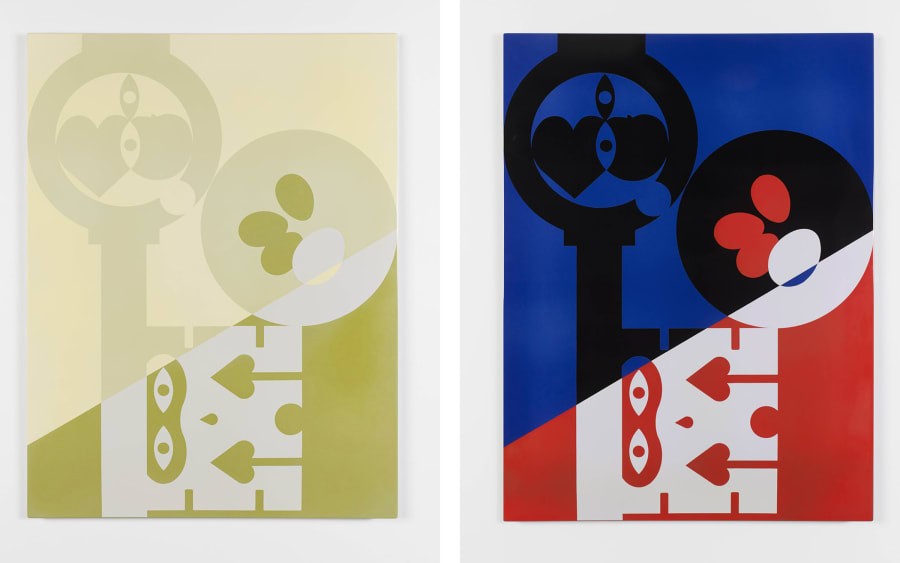‘I grew up in a little village in Switzerland called Villette. It is located in the vineyards between Lausanne and Montreux, with a view of Lake Geneva and the Alps. The landscape is quite spectacular: the light and the water change all the time, and in autumn, the grapes turn fully red. This must be my earliest visual memory. One of the first artists I loved was the Swiss landscape painter François Bocion (1828-1890), who was celebrated locally. My family was always very supportive of me, especially my grandmother, who would buy little paintings that I made as a teenager. Although I barely met her, my great-grandmother loved making art. As a hobby, she would paint on furniture – I still have some of the pieces.
‘I left high school before graduating. I studied for 2 years in Fribourg at one of the first schools to mix design and new media, the École de multimédia et d’art de Fribourg. I loved the foundational training in the arts, but I left when we started to really use the computer. I was accepted to the École cantonale d’art de Lausanne and enrolled in the cinema section before switching to the graphic design department. At the time, John Armleder was teaching at the school and he was doing wallpapers that he would then hang objects on. He is a fantastic artist and had a huge influence on the scene. When I left, I was doing murals, which many people found surprising, but in Lausanne everybody was painting walls!
‘I was drawn to museums from a very young age because they were safe spaces to me. When it comes to art, I am more of a looker, as I don’t need to know much about a picture to appreciate it. I have tons of books, but I prefer novels and non-fiction to art criticism. I have recently been reading the work of Edward O. Wilson (a biologist, ecologist, and entomologist) and Rachel Louise Carlson (a marine biologist and conservationist). The latter, who is often credited with starting the environmental movement, has written influential essays such as The Sea Around Us (1950) and Silent Spring (1962).
‘One artist that I have a deeper knowledge of is Rosalba Carriera (1673-1757) who lived her whole life in Venice and started the pastel trend of the 1700s. I currently have a project at The Frick Collection in New York, where I created three pastel murals that I combined with one of her portraits, Portrait of a Man in Pilgrim’s Costume from the 1930s. I also own two of her pastels, one is in my home and the other in the studio – in that way, I can always look at her work. People often mention Picasso, saying that I started to use pastel after I saw a work of his. The story is true, but he actually didn’t use the medium that much.
‘Recognition is a tricky notion. At first, only a very small group of people see your art: your family, your teachers at art school, a small group of friends, and then, if you are lucky, it keeps expanding. Right now, I have a show in Germany, ‘When Tomorrow Comes’. The staff once told me they had a thousand visitors in one day. At that point, you don’t really know who your audience is, except maybe if you go on Instagram and look at the photos and comments. In the art world, people generally don’t write bad things, whereas for books the feedback left online can be much more critical.
‘Over the last year or so, my imagery has evolved: I painted big forest fires and dinosaurs, and even my young daughter. ‘When Tomorrow Comes’ establishes a clear connection between my work and the idea of extinction. The end of humanity has always been around, but what has changed is it now also relates to many other species. It is hard not to be concerned. My perspective on time has also shifted: having a child makes you see things through a much wider timespan.
‘Sometimes, your work changes and you don’t really understand why. You might even hope to communicate something that is inside you but that you don’t know about yet. I think that this is why so many people love and need art, because it gives you access to those feelings. Art inscribes feelings into objects so that people can explore them again.’
Nicolas Party is represented by Hauser & Wirth (Zurich, Hong Kong, London, Los Angeles, New York, Paris, Somerset, St. Moritz), Xavier Hufkens (Brussels), The Modern Institute (Glasgow), Galerie Gregor Staiger (Zurich, Milan), Kaufmann Repetto (Milan, New York), and Karma (New York, Los Angeles).
‘Nicolas Party: When Tomorrow Comes’
Until February 18, 2024
Museum Frieder Burda, Baden Baden
’Nicolas Party and Rosalba Carriera’
Until March 3, 2024
The Frick Collection, New York
Ingrid Luquet-Gad is an art critic and PhD candidate based in Paris. She teaches art philosophy at the University Paris 1 Panthéon-Sorbonne.
Published on February 7, 2024.
Full-bleed image: Nicolas
Party, Red Forest, 2023. Installation view, 'Nicolas Party: When Tomorrow Comes', Museum
Frieder Burda, Baden-Baden, Germany, 2023. © Nicolas Party. Photo:
Nikolay Kazakov.


